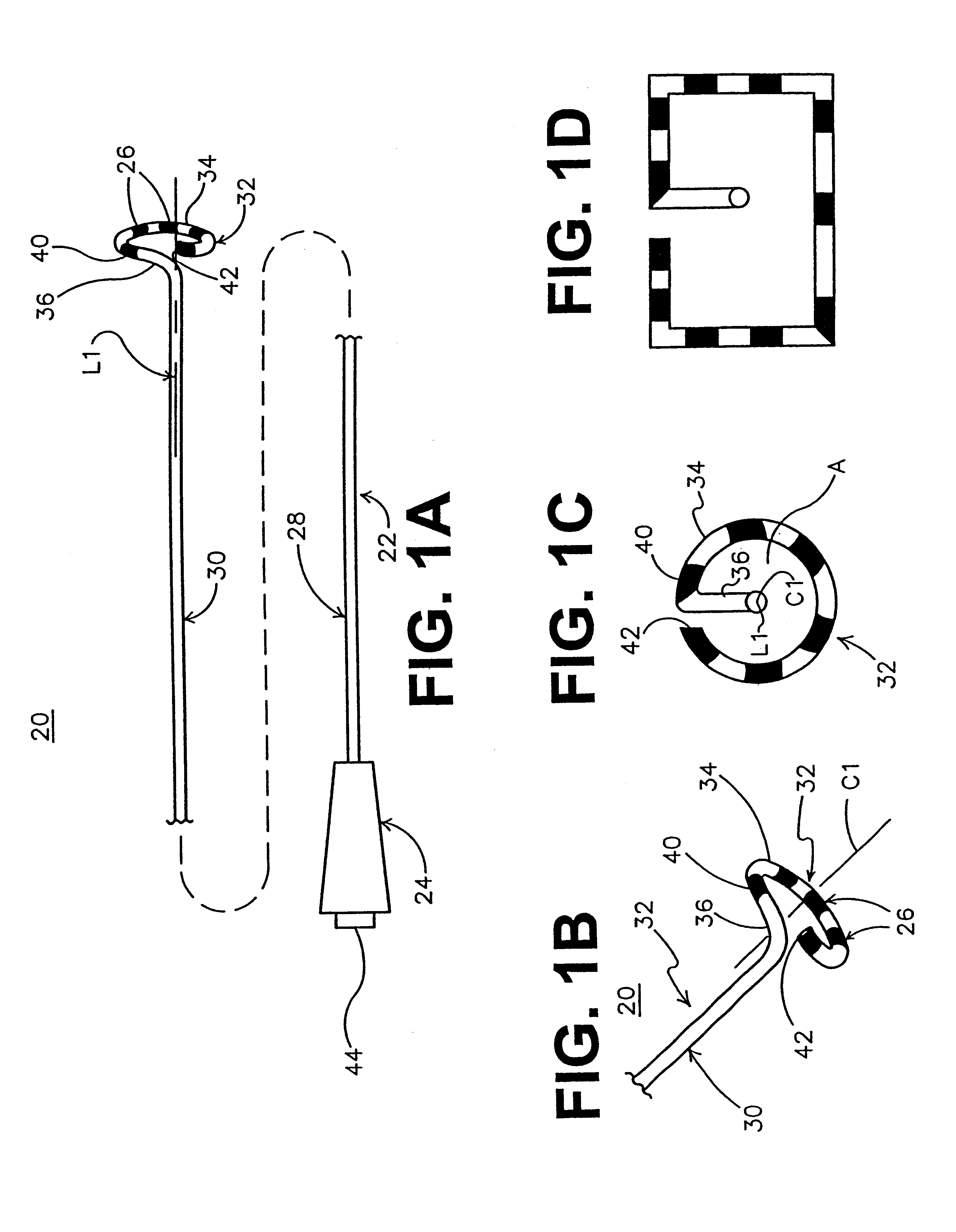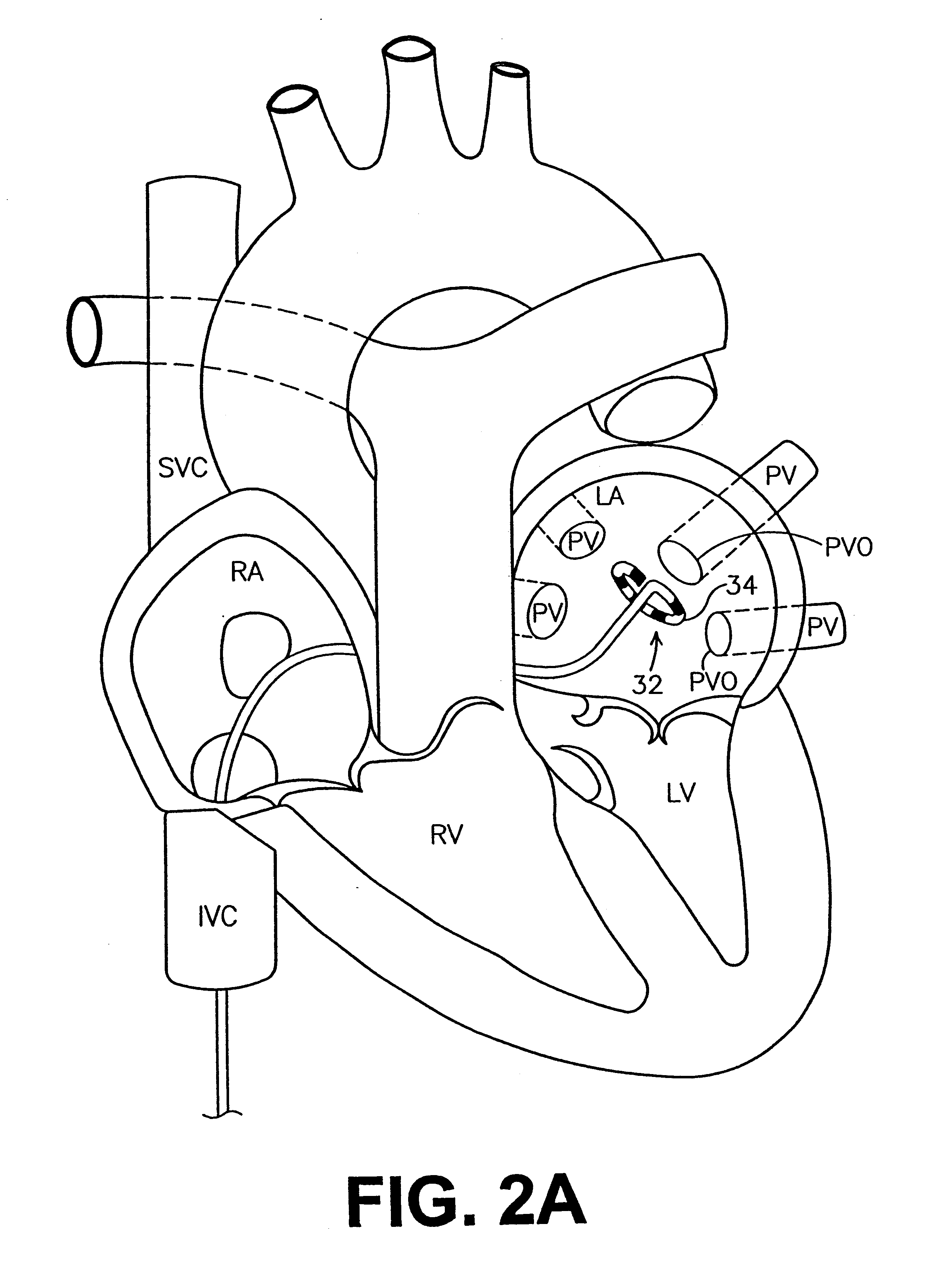Ablation catheter and method for isolating a pulmonary vein
a pulmonary vein and catheter technology, applied in the field of ablation catheters for treating cardiac arrhythmias, can solve the problems of affecting the treatment effect, and affecting the treatment effect, and achieving the effects of reducing the number of patients
- Summary
- Abstract
- Description
- Claims
- Application Information
AI Technical Summary
Problems solved by technology
Method used
Image
Examples
Embodiment Construction
[0038]One preferred embodiment of a catheter assembly 20 in accordance with the present invention is shown in FIGS. 1A-1C. The catheter assembly 20 is comprised of a catheter body 22, a handle 24 and electrodes 26. As described in greater detail below, the catheter body 22 extends from the handle 24, and the electrodes 26 are disposed along a portion of the catheter body 22.
[0039]The catheter body 22 is defined by a proximal portion 28, an intermediate portion 30 and a distal portion 32, and includes a central lumen (not shown). Although not specifically shown, the catheter body may be configured for over-the-wire or rapid exchange applications. In one preferred embodiment, the proximal portion 28, the intermediate 30 and the distal portion 32 are integrally formed from a biocompatible material having requisite strength and flexibility for deployment within a heart. Appropriate materials are well known in the art and include polyamide.
[0040]The intermediate portion 30 extends from t...
PUM
 Login to View More
Login to View More Abstract
Description
Claims
Application Information
 Login to View More
Login to View More - R&D
- Intellectual Property
- Life Sciences
- Materials
- Tech Scout
- Unparalleled Data Quality
- Higher Quality Content
- 60% Fewer Hallucinations
Browse by: Latest US Patents, China's latest patents, Technical Efficacy Thesaurus, Application Domain, Technology Topic, Popular Technical Reports.
© 2025 PatSnap. All rights reserved.Legal|Privacy policy|Modern Slavery Act Transparency Statement|Sitemap|About US| Contact US: help@patsnap.com



